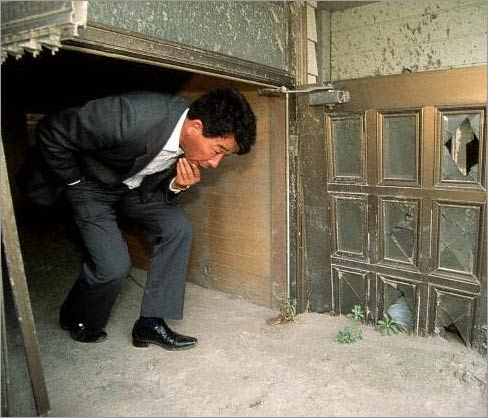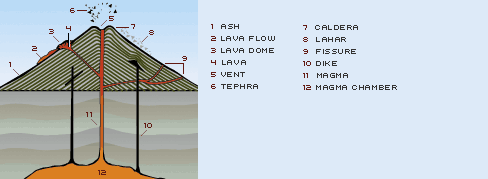

|

|
Ash
Volcanic ash consists of rock, mineral, and volcanic glass fragments
smaller than a tenth of an inch in diameter—or slightly larger
than a pinhead. Volcanic ash is quite different from the soft,
fluffy ash that results from burning wood, leaves, or paper. It is
hard, does not dissolve in water, and can be extremely
small—ash particles less than 1/1,000th of an inch in diameter
are common. It is also extremely abrasive (similar to finely crushed
window glass), mildly corrosive, and electrically conductive,
especially when wet.
Volcanic ash is created during explosive eruptions by the shattering
of solid rocks and the violent separation of
magma into tiny
pieces. Explosive eruptions result when groundwater heated by magma
abruptly converts to steam and also when magma reaches the surface
so that volcanic gases dissolved in the molten rock expand and
escape into the air extremely rapidly. Hot ash and gas rise quickly
to form a towering eruption column directly above the volcano.
Above left: Ash from the 1993 eruption of Unzen volcano in
Kyushu, Japan rises halfway up the walls of a house.
|



